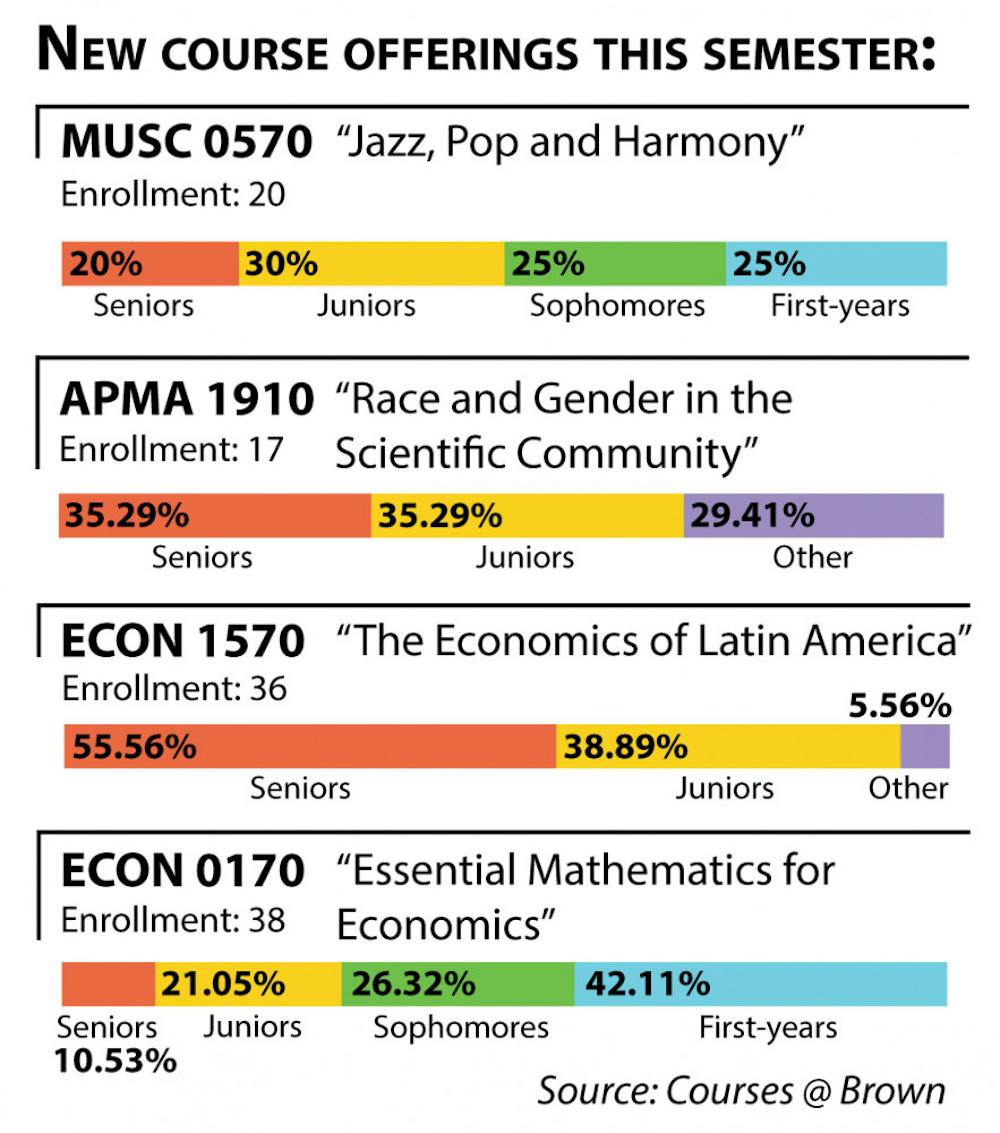As the University’s academic departments released their own departmental diversity and inclusion action plans last fall, many mentioned new spring courses intended to build upon the goals set forth in the University’s Diversity and Inclusion Action Plan to increase faculty and student diversity both within individual departments and campus wide.
ECON 0170: “Essential Mathematics for Economics,” is one of those classes. Anna Aizer, professor of economics who helped develop and implement the DDIAP, said the course aims to foster the inclusion of students from under-resourced schools who may not be able to use high school Advanced Placement credit for the math requirement.
“We didn’t want to be turning off any students, particularly those who simply hadn’t had AP access,” Aizer said.
In an attempt to alleviate this issue, the new math class focuses much more on applied math to make it “easier to understand underlying concepts with examples that are relevant to social sciences,” she said. An economics professor teaches the course rather than a math professor, and the content is more accessible to economics concentrators, she added.
The economics department also added a class that focuses on immigration, ECON 1570: “The Economics of Latin America,” which serves as a “timely class with a lot of important implications for the political situations today,” Aizer said.
The class looks at Latin Americans in the United States both theoretically and empirically to discuss “discrimination, the importance of networks and issues of documentation” as they pertain to immigrants, said Pedro Dal Bó, associate professor of economics and instructor of the course.
“It’s important to have this space, (to give) Latin Americans the attention they deserve considering their magnitude in the (United States),” Dal Bó said. He added that he hoped the class will appeal to not only Hispanics but also people of other ethnicities, since “it’s impossible to understand the United States without understanding one of the main minority groups.”
In the music department, the class MUSC 0570: “Jazz and Pop Harmony” is now offered as an alternative to MUSC 0560: “Theory of Tonal Music” to cater to students with musical interests other than Western classical, according to the DDIAP. This includes those studying computer music and multimedia, jazz, pop, rock and ethnomusicology, said Matthew McGarrell, senior lecturer in music who co-teaches the new theory class.
MUSC 0560 may pose a “hurdle to those studying ethnomusicology or computer music who haven’t played an instrument,” McGarrell said.
But this new alternative course can replace only the second half of a year-long music theory sequence. The department said it would continue to evaluate its curriculum and has considered several courses of action regarding the first semester theory course, such as offering an alternative theory course or disregarding the music theory requirement altogether, McGarrell said.
“The idea that these (pieces of Western music) have to be elevated” has now been mostly “discredited,” he said.
The music department is also considering other measures to increase diversity and inclusion, such as drawing more women and people of color toward its male-dominated computer music and multimedia track.
“Jazz music is of African origin,” but we have very few students who come from that background, McGarrell said.
With the new class APMA 1910: “Race and Gender in the Scientific Community,” STEM departments have also prioritized diversity and inclusion. Originally developed by a group of undergraduates as a Group Independent Study Project, the course uses literature and statistics to discuss the role of underrepresented groups, said Bjorn Sandstede, professor of applied mathematics who teaches the course.
Nicole Kaufmann ’18, a student in the class, stressed the importance of a sense of inclusion in a mostly male-dominated field. “This class really made me feel like I was coming home because I was with a lot of women and other minorities in STEM,” Kaufmann said.
An Phan ’19, another student in the class, said she hopes that the course reaches students beyond those from historically underrepresented groups and educates those in positions of power and “aren’t as aware of these issues.”
“We talk a lot about white cis males, and we don’t have a single white cis male in the class,” Phan said.
“Bjorn is incredible,” Kaufmann said. “As a white man in a position of power in a STEM field, he knows that it’s important to teach this course and learn from it, and he does everything he can to make (students from HUGs) feel welcome,” she added.





